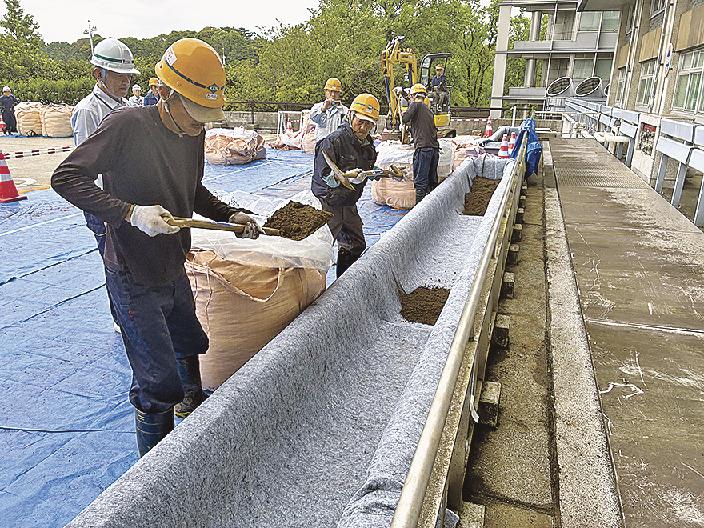Ministry of the Environment Brings Decontaminated Soil to Kasumigaseki Central Government Building No. 3
September 24, 2025 – Administration & Organizations

On September 20, the Ministry of the Environment (MoE) transported decontaminated soil from the Fukushima nuclear power plant accident following the Great East Japan Earthquake to the Kasumigaseki Central Government Building No. 3, which houses the Ministry of Land, Infrastructure, Transport and Tourism (MLIT) in Tokyo. This initiative is part of efforts to promote the reuse of decontaminated soil for reconstruction purposes.
Approximately 6 cubic meters of soil were used in two flower beds at the main entrance of the building. Early that morning, seven large bags were loaded at an intermediate storage facility in Fukushima Prefecture, transported by a 10-ton truck, and placed into the flower beds by workers.
This marks the fourth government facility to receive such soil. There are plans to reuse it in a total of nine facilities, with deliveries to five facilities completed as of the same day. At Building No. 3, the soil covers about 31 square meters, filled to a depth of 15 cm at the bottom and topped with 20 cm of cover soil. Signs indicate that the soil is being reused as part of reconstruction efforts.
The transport and installation were conducted in accordance with relevant laws and guidelines. MoE officials said they chose the workday based on weather to prevent dust dispersal. They also noted, "We hope visitors will notice the flower beds and gain understanding of soil reuse for reconstruction purposes."
At the intermediate storage facilities in Ōkuma and Futaba, Fukushima Prefecture, approximately 14 million cubic meters of decontaminated soil are stored. About three-quarters of the soil, with a radioactive concentration of 8,000 becquerels per kilogram or less, can be reused in public works and other projects. The MoE plans to continue promoting initiatives for reconstruction-oriented reuse.






